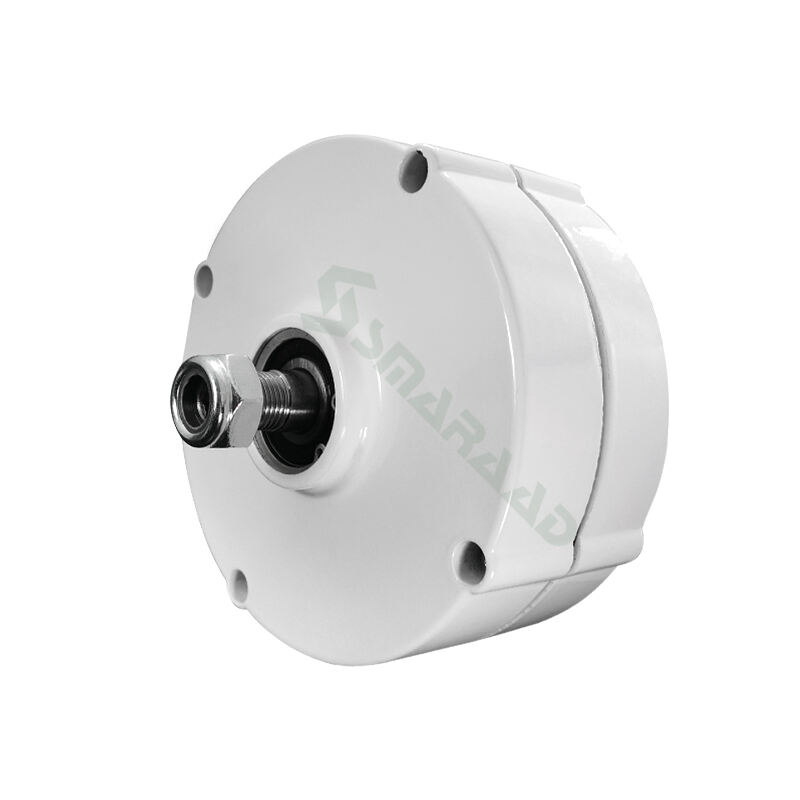One of the most crucial energy types taking place by using solar power from sunlight. We use special controllers to take advantage of solar power. These controllers operate in conditions where weather patterns can interrupt the operation of a panel. They optimize your panel to function at its maximum efficiency and even help you save energy or produce more power. The controllers can even monitor how well the solar panels are producing and be modulated from an infinite remote distance to keep them top heaven all of the time.
Wind energy systems have these large machines, called turbines that we use to generate power from wind. Contemporary turbines of this type have much more intelligent controllers. They can control how the turbine blades spin, and what energy they produce is contingent upon wind speeds. This allows the turbines to generate more power and ultimately results in extended operational life. The wind farm can be run by a remote operator with those same controllers predicting when the turbines might need to go on holiday so that they keep making power without any interruptions.
Hydroelectric power plants: Water makes electricity. The controllers for these plants are super smart and actually use special technology to know how much water is coming the flow of it, what its quality like, and it knows exactly where can be used with no risk of damaging or harmful to sky. They too can regulate the water level in reservoirs; to manage power capacity and avoid floods. The controllers change how the plant operates rapidly in order to accommodate efficient power production.
This is energy from beneath the surface of our planet - This Brand Energy. The heat and pressure deep underground are controlled by controllers to optimize the generation of power from geothermal energy. They use sensors and programs to check that the hot fluids underground are at the correct temperature, and flowing in the intended manner. These controllers also pay closer attention than us and will know if there is any issues with the geothermal energy source.
Plants and waste provide biomass energy This type of material is used in ancillary biomass energy controllers, which can provide good constant temperature burning controllers to generate electricity. They will be able to control the amount and combustion heat of material used, thus making maximal power. Those controllers have a second quality inspector role when looking at what remains after burning to see if it will be used in a good way.
This is a simple platform to make an eco-friendly and medicated good performance energy. They assist small renewable power sources to produce a huge amount of electricity. The use of these controllers ensures that we have cleaner and more robust sources of energy in the future.
Advanced Renewable Energy Controllers Explained
Below we dive deeper into how modern controllers are changing the world of renewable energy. These advanced systems play a crucial role in enhancing different renewable energy sources for high performance capacity [16].
Solar Power -- Enhanced
The overview of solar energy and its development in recent years, that this paper covered shows how important Solar Power Controllers are for optimal utilization of a renewable resource like the sun. Modern solar energy controllers come with some impressive functionality (eg: Maximum Power Point Tracking, MPPT) to maximize the output of your solar panels through all types of weather events. These controllers will continually shift the point at which the panels operate, and it increases efficiency as well as total energy harvest. Furthermore, the provide live monitoring and remote correction to guarantee that solar arrays are running at optimal levels 24/7.
Efficiency of Wind Turbines
In the wind sector, energy generated relates directly to turbine efficiency. The newest control systems use advanced algorithms to change blade pitch and generator torque as wind speeds rise or fall. But this dynamic control can also increase how much energy a turbine captures and prolong the life of turbines. With this, the predictive maintenance features add to convenience by enabling repairs as and when needed for maximum uptime (power generation) in addition to improved returns.
The New Age of This Brand Power Management
Introduction of this brand power plants are designed to carefully manage water flow and operations of their turbines in order to produce the maximum amount of electric energy while having as minimal impact on nature that surrounds them. With the trans-formative AI-enable hydroelectric controllers which are able to implement predictive analytic on their own and predict water inflows with a higher degree of accuracy, heritage turbine operations can now automatically adjust. They also do a great job managing reservoir levels for both flood control and environmental preservation in addition to being the largest producer of hydro-logical power.
Advanced Brand Energreset404y Control
The power conversion at a brand energy extraction site requires stringent temperature and pressure control. The development of advanced geothermal controllers, which combine sensor nets with machine learning models, improve upon these systems by maximizing heat exchange processes and thermal fluid management. These controllers can also keep an eye on what is happening beneath the surface to avoid over-extraction and potential hazards.
Optimizing Biomass Energy Conversion
Advanced control systems can provide several advantages to biomass energy conversion processes. With these controllers, feed stock supply and combustion temperatures are regulated to maximize energy output. By means of integrating Io T sensors, you can make dynamic adjustments as feed stock variation would possibly exchange and reduce emissions on the identical time enhancing system efficiency. Method Continuous monitoring will maintain byproduct utilization in the different sectors of industry.
In summary, the incorporation of this type of controllers in energy systems marks an important step towards sustainability and efficiency. These technologies thus enable renewable energy sources to fulfill their promise as low-cost environmentally-responsible power generators. We are working towards much-needed effective public development of these controllers and as we move toward the low-carbon future, smartly deploying such solutions will be essential to designing a cleaner and more resilient energy landscape.
 EN
EN
 AR
AR BG
BG HR
HR CS
CS DA
DA NL
NL FI
FI FR
FR DE
DE IT
IT NO
NO PL
PL PT
PT RO
RO RU
RU ES
ES SV
SV TL
TL IW
IW ID
ID LV
LV LT
LT SR
SR SK
SK SL
SL UK
UK VI
VI SQ
SQ ET
ET HU
HU MT
MT TH
TH TR
TR AF
AF GA
GA HY
HY KA
KA MY
MY
